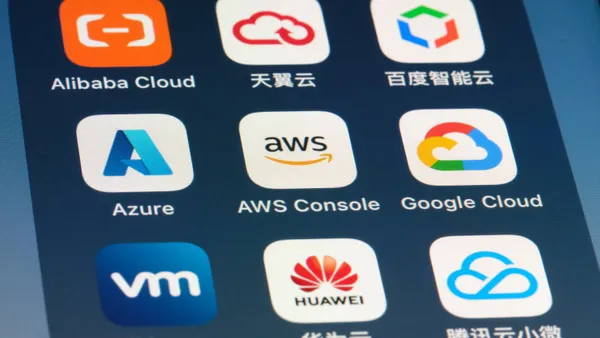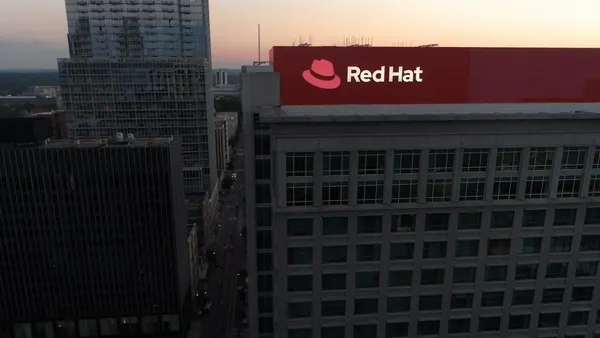Dive Brief:
- The Competition and Markets Authority found structural barriers to multicloud adoption, including technical issues, software licensing practices, discount policies and egress fees, according to a May 23 report from the UK regulatory agency.
- “Switching cloud providers is seen as the equivalent of moving other kinds of infrastructure, such as ‘moving house’ or moving a business from one country to another,” according to the report, which drew on 60 interviews with cloud decision-makers at 50 companies, conducted by research firm Jigsaw earlier this year.
- Communications regulator Ofcom referred the public cloud infrastructure market to the CMA in October, after a year-long investigation found features and practices that could limit competition between vendors, resulting in lock-in and pricing concerns.
Dive Insight:
As cloud has become a prime mover of enterprise modernization, regulators have scrutinized the business practices of the three largest global providers — AWS, Microsoft and Google Cloud.
Together, the three hyperscalers control two-thirds of the global cloud infrastructure services market, according to Synergy Research Group. Separately, the companies maintain discount programs, billing language and technical specifications that can make switching providers difficult and operating in multiple clouds costly and complex.
"The research clearly shows that there are very significant technical barriers that reduce participants’ willingness to consider switching cloud provider or going for a multicloud strategy,'' according to the report. “Those who had switched felt it had not only brought cost and operational risk but took IT staff away from core work and typically ended up being more challenging and time consuming than anticipated.”
Enterprises perceived AWS, which commands 31% of the global market, to be the leading provider in terms of innovation and range and quality of services, the agency said. Microsoft, a close competitor behind AWS with one-quarter of the market, was favored for identity and access management. Google Cloud, the junior hyperscaler with an 11% market share, was ranked by respondents as strongest in analytics.
With regulatory pressure mounting, the three cloud giants made concessions earlier this year, removing data egress fees for some but not all workloads. AWS, Microsoft and Google Cloud also signed on to the FinOps Open Cost and Usage Specification. The FinOps Foundation's cloud cost, usage and billing standardization project would make it easier for enterprises to compare service costs across multiple providers.
While companies interviewed for the report acknowledged billing idiosyncrasies could help optimize consumption, cloud leaders struggled to assess the actual value. “This is due to the complexity of billing and ongoing contracts sometimes not aligning with each other in terms of timing,” the report said.
Microsoft has faced additional scrutiny by U.K. and European Union regulators for its software licensing practices. The company responded by unbundling the Teams application from the 365 office productivity suite in April.
The CMA report noted that preexisting contracts for Microsoft products and services steer customers to the software company’s Azure public cloud services. The report also noted that Google Cloud customers are often swayed by interoperability with Google’s office productivity suite.
Despite each hyperscaler’s differentiation efforts, many of the companies surveyed by Jigsaw said services provided by the three hyperscalers were “80% the same.”
The similarities do not extend to interoperability.
“The tendency to reject the idea of [multicloud] or switching provider is based on the view that the benefits of such a strategy are relatively low but the technical barriers standing in the way are relatively high,” the report concluded.














